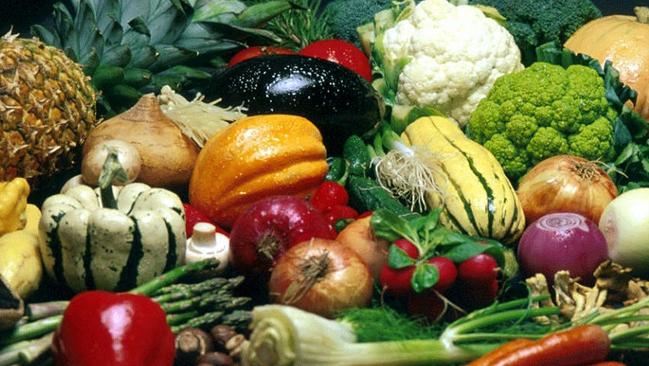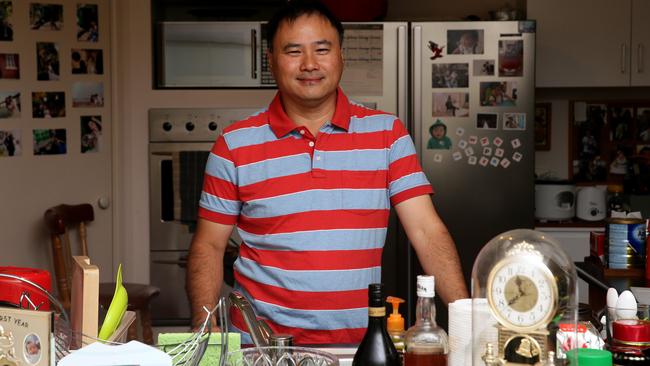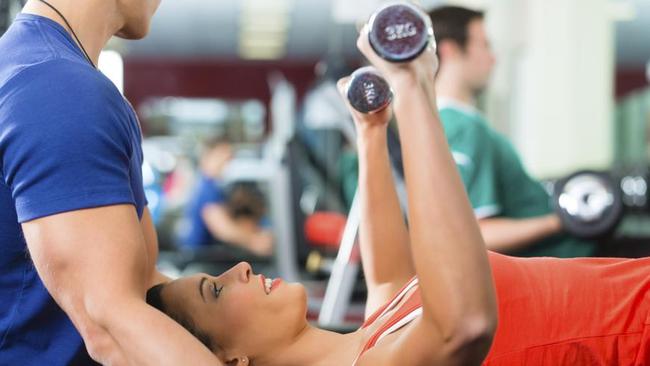South Western Sydney Local Health District’s health data revealed
We are eating more fruit but not vegetables, have cut back a little on alcohol and cigarettes, but there are some worrying health trends in south west Sydney.
For the first time, statistics have been collated to get an overall picture of the health population in south west Sydney.
And the prognosis does not look good.
What has alarmed health experts is the percentage of people with diabetes rising from 7 per cent in 2002 to 11 per cent.
And one in four people has high blood pressure.
The bad news doesn’t end there, with 57 per cent of people falling into the overweight and obese categories.
To keep on top of the problem areas, there are plans to gather information every year through a 45-minute telephone survey of local residents.
More than 100 questions were asked – everything from food security, physical activity to weight, smoking and life expectancy.
South Western Sydney Local Health District epidemiology director Bin Jalaludin said that people should be tightening their belts instead of letting them out a notch. He said a person’s weight helped determine a person’s health and wellbeing.


Dr Jalaludin said there was a global push on people leading an active lifestyle.
Locally only 51 per cent of residents are getting adequate physical activity.
“This needs to be higher,” he said.
“People need 30 minutes a day, five times a week and there are a range of ways they can do that – they don’t need to join a gym if they don’t want.
“They can garden, do the housework, jog, play organised sports, go to the park with their children or walk.”
While the Body Mass Index is often scrutinised, Dr Jalaludin said it was still widely used for research.
“And if you’re looking at trends, our BMI has been going up over the years and that’s a major concern. Not just in NSW, but nationally and internationally.
“In many countries, people are getting more overweight and obese which leads to other problems like diabetes and heart disease.”
Dr Jalaludin said controlling weight and eating healthy can curb some of the illnesses and conditions that can develop including high blood pressure and diabetes.
There are some areas that have improved.
Alcohol consumption at levels harmful to health is down 6 per cent, smoking has dropped 1 per cent and one in two people are consuming enough fruit.
“Progress and change is slow. Back in the 1950s and 1960s, smoking rates were about 30 per cent,” Dr Jalaludin said. “Today, more than 50 years on, it’s only at 21 per cent.
“You’re talking only half a per cent drop in a year. Changed behaviour takes time. “It takes a lot of effort and leadership from our politicians,” Dr Jalaludin said.
Time to eat your veggies
Come on Liverpool, it’s time to eat your vegetables.
Experts say we should be eating five serves a day – and you’re not getting enough.
Health Statistics NSW data reveals only seven per cent of residents in the region are getting enough.
Twins Aleeah and Maddison Harvey are bucking that trend, choosing fruit and vegetables over anything else at meal time.

Their mother Stephanie Crossland said fruit and vegetables had always been on the menu. “The only problem is fruit and vegetables are so expensive,” she said.
South Western Sydney Health District community nutrition manager Maine Norberg wished there were more people out there like Maddison and Aleeah, 2.
She said food insecurity was a big problem in the area, with many opting for the easy route of takeaway foods rather than cooking in their kitchen.
“If somebody is getting groceries and they see carrots for $3 a kg, and their kids won’t eat it, they don’t want to waste what little money they have,” Ms Norberg said.
She said, unfortunately, the most commonly-eaten vegetable was potato, and it was often fried and salted.
Diabetes diagnosis changed Robert’s life completely
Robert Woo has never had a reason to get a blood test, but he decided to tag along with a colleague to a work health clinic three years ago.
He did a finger-prick test and his blood glucose levels were high.
He’d just eaten lunch, so they suggested he see his GP for a follow up.
After fasting for a blood test, his result was still above the normal range.
He was diagnosed with diabetes – something he never suspected.

He is among 11 per cent of the South Western Sydney Local Health District population who has diabetes, a figure that has risen four per cent in 12 years.
Looking back, the Prestons man said he had all the signs that pointed to diabetes.
“I lost weight for no apparent reason, I was thirsty and going to the toilet a lot,” Mr Woo said.
“I honestly thought, what I don’t know, won’t hurt me.
“But if you leave something like this, you can do irreversible damage to your body.”
He was always tired, but after just a few months on medication and changing his lifestyle, he said he was better.
Mr Woo, 51, changed his diet, increased his exercise and kept a watchful eye on any symptoms that developed. Something he continues to do.
“I can’t eat what I want anymore,” he said.
“My diet is very different to before – it now means lots more vegetables.
“My advice to other people is to have regular health checks. It could even save your life.”


How we measure up
■ High blood pressure: 2002 19 per cent; 2014 26 per cent
■ 1 in 2 is consuming the recommended amount of fruit
■ 90 per cent of children are fully immunised at 12 months
■ Diabetes: 2002 7 per cent; 2014 11 per cent
■ 93 per cent of children are fully immunised at age 5
■ 1 in 2 is getting adequate exercise
■ Smokers: 2002 22 per cent; 2014 21 per cent
■ 65 per cent feel safe walking after dark
■ 1 in 14 is consuming the recommended amount of vegetables
■ 1 in 3 adults is overweight
■ Alcohol: 2002 26 per cent; 2013 20 per cent
■ 1 in 5 adults is obese
■ Life expectancy at birth is 83.9 years for females and 79.2 for males
■ Population in south west Sydney: 1972 - 455,600; 2014 - 888,600
■ 172 cancer deaths per 100,000


